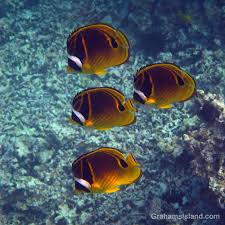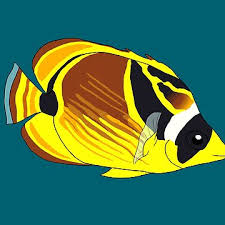In Chinese culture, few symbols hold as much power and meaning as the dragon (龙, Lóng). Unlike the fire-breathing creatures of Western mythology, the Chinese dragon is a benevolent, celestial being that represents wisdom, strength, and eternity. Throughout history, dragons have been closely linked to the concept of immortality, not only in folklore but also in art, philosophy, imperial traditions, and spiritual beliefs.

This article explores the deep connection between dragons and symbols of eternity in Chinese culture, highlighting their roles in mythology, Taoist philosophy, religious beliefs, and imperial heritage.
1. The Dragon as a Symbol of Eternal Power
1.1 The Immortality of Dragons in Chinese Mythology
In ancient Chinese mythology, dragons are often depicted as ageless, celestial beings that live beyond the limitations of time. Unlike humans and other creatures, they are believed to exist in a continuous cycle of renewal, symbolizing eternal strength and longevity.
- Heavenly Dragons (天龙, Tiān Lóng): These celestial dragons are thought to live among the stars, never aging or dying, guiding the universe’s balance.
- The Dragon Kings (龙王, Lóng Wáng): As rulers of the seas and rivers, these divine dragons ensure the eternal flow of water, a symbol of continuity and life.
- The Five-Clawed Imperial Dragon: Representing the emperor, this dragon’s existence was believed to be eternal, as long as the dynasty thrived.
1.2 The Eternal Mandate of Heaven and the Emperor’s Dragon
The Mandate of Heaven (天命, Tiānmìng) was a divine right granted to emperors, symbolizing their eternal connection to the cosmos. The dragon, as the emperor’s emblem, reinforced this timeless authority.
The belief was that as long as the emperor ruled with virtue, the dragon’s spirit would continue to protect the dynasty. This idea cemented the dragon’s status as a symbol of eternal sovereignty.
2. Dragons and the Taoist Philosophy of Immortality
2.1 The Dragon as a Guardian of the Tao
Taoism (道教, Dàojiào) teaches that true immortality is achieved by following the Tao (道, Dào)—the fundamental principle of the universe. Dragons are considered sacred guardians of the Tao, guiding seekers toward enlightenment and eternal existence.
- The Azure Dragon of the East (青龙, Qīng Lóng): A powerful symbol of rebirth and the endless cycle of life.
- The Yin-Yang Dragon: A representation of the balance between life and death, emphasizing the eternal flow of energy in nature.
2.2 The Dragon’s Role in Taoist Alchemy and Immortality
Taoist alchemists sought to create the Elixir of Immortality (长生不老药, Chángshēng Bùlǎo Yào), and dragons were often invoked in their rituals. It was believed that dragons possessed divine energy (气, Qì) that could prolong life.
Some legends tell of Taoist sages riding dragons to the heavens, achieving eternal life by merging with the cosmic flow.
3. Dragons in Chinese Art and Symbols of Eternity
3.1 The Endless Flow of Dragon Motifs
In traditional Chinese art, dragons are often depicted with symbols that represent eternity and continuity, such as:
- Clouds (云, Yún): Representing the eternal presence of the dragon in the sky.
- Waves and Rivers (水, Shuǐ): Symbolizing the unending flow of life and time.
- Circular Dragon Patterns: Seen in imperial robes, temple murals, and jade carvings, these motifs reinforce the idea of a never-ending cycle of existence.
3.2 The Dragon and the Chinese Knot of Eternity
A significant symbol in Chinese culture is the Eternal Knot (盘长结, Páncháng Jié), a decorative pattern with no beginning or end. Often, dragons are woven into these designs to emphasize:
- The eternal cycle of life and wisdom.
- The never-ending protection of the dragon spirit.
- The unbreakable connection between past, present, and future.
4. The Dragon and Other Eternal Symbols in Chinese Culture
4.1 The Dragon and the Phoenix: Eternity in Balance
One of the most famous pairings in Chinese mythology is the Dragon (龙, Lóng) and Phoenix (凤, Fèng).
- The Dragon symbolizes eternal strength, power, and wisdom.
- The Phoenix represents renewal, rebirth, and everlasting harmony.
Together, they create the perfect symbol of eternal unity and cosmic balance, often used in weddings, imperial insignias, and cultural festivals.
4.2 The Dragon and the Endless Circle of Jade
Jade (玉, Yù) is considered the stone of immortality in Chinese culture. Dragons are frequently carved into jade discs (bi, 璧), which represent:
- The cycle of the heavens and eternity.
- The unbreakable connection between the divine and mortal worlds.
- Protection and longevity for the wearer.
Imperial rulers wore dragon-shaped jade pendants to symbolize their eternal rule, believing that jade preserved their spirits even after death.
5. Dragons in Chinese Temples and Eternal Worship
5.1 The Guardian Dragons of Sacred Sites
Chinese temples often feature dragon statues and carvings as eternal protectors of spiritual wisdom. The belief is that these dragons:
- Ward off negative energy and misfortune.
- Ensure the temple’s spiritual power remains eternal.
- Represent the unbreakable connection between gods and humanity.
5.2 The Eternal Dragon Dance in Festivals
During Chinese New Year and the Mid-Autumn Festival, the Dragon Dance (舞龙, Wǔ Lóng) is performed to symbolize:
- The endless protection of the dragon.
- The renewal of fortune for the coming year.
- The eternal blessing of prosperity and health.
The long, continuous movement of the dragon in the dance represents the never-ending cycle of luck, wisdom, and vitality.
Conclusion: The Everlasting Presence of Dragons in Chinese Culture
From the Mandate of Heaven to Taoist immortality, from imperial art to religious ceremonies, the dragon has remained a timeless symbol of eternity in Chinese culture. Whether as a celestial guardian, a protector of emperors, or a guide to enlightenment, the dragon embodies the infinite flow of life, power, and wisdom.
Even today, in festivals, architecture, and philosophy, the spirit of the dragon continues to soar, reminding us that some legends truly last forever.










